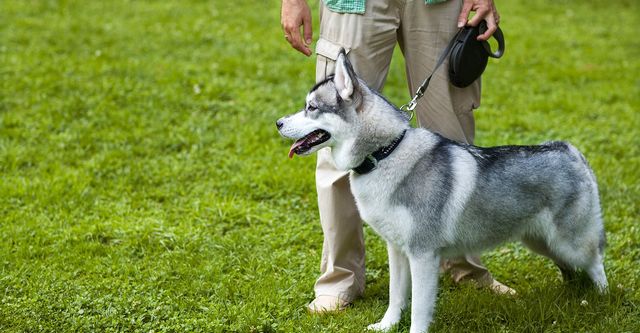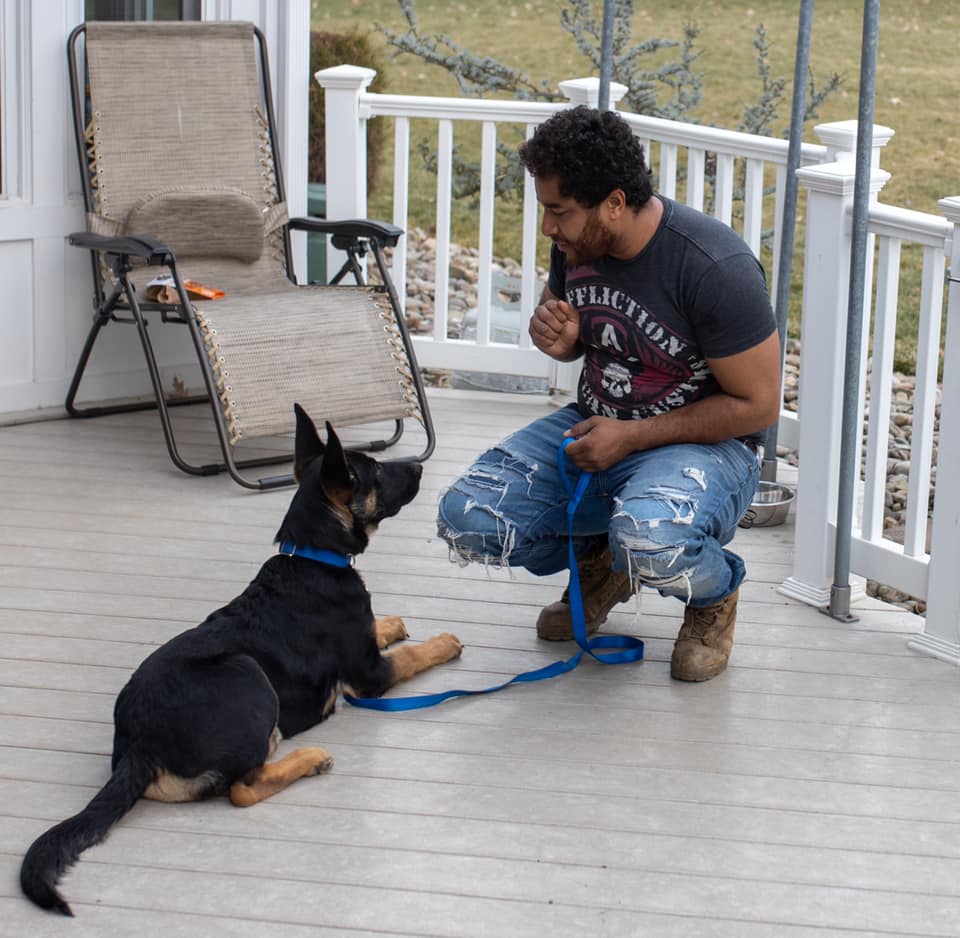Dog Training Near Me: Common Mistakes Owners Should Avoid
A Beginner's Trip Into the World of Canine Training: Trick Insights and Approaches
A beginner's journey right into canine training often reveals a complicated interaction of recognizing canine habits and reliable interaction approaches. New trainers rapidly uncover the value of positive reinforcement and the need for consistency in their method. As they navigate via vital commands and socializing, difficulties might occur. These experiences can evaluate their patience, yet they additionally present possibilities for growth. What understandings will arise as they confront common barriers and construct a stronger bond with their canines?
Recognizing Your Dog's Habits
How can a dog's behavior expose its mood? Understanding canine actions is necessary for effective training and building a solid bond. Canines communicate through body movement, articulations, and actions, each offering insight right into their sensations. A wagging tail normally indicates happiness, while a decreased tail might signal anxiety or entry.
A dog that barks exceedingly may be expressing stress and anxiety or excitement, while an unwinded position recommends comfort and contentment. Observing these actions aids proprietors react suitably, fostering a supportive atmosphere. In addition, habits such as pacing or too much licking can suggest stress or discomfort, signifying a requirement for intervention.
Identifying these psychological hints permits pet proprietors to tailor their training methods, ensuring that they address their pet's specific demands. By recognizing their moods, owners can support a trusting partnership, ultimately causing more effective training outcomes.
Crucial Training Devices and Equipment
A range of necessary training tools and equipment can substantially improve the canine training experience. Beginners typically discover that a well-fitted collar or harness is essential for making sure both comfort and control throughout training sessions. Leashes, ideally 4 to 6 feet long, provide the required advice while enabling liberty of movement. Clickers act as effective devices for noting wanted actions, promoting clearer interaction between the pet dog and the trainer.
Additionally, treat pouches can simplify the process of satisfying etiquette, keeping deals with easily accessible. Educating mats or assigned areas help develop limits, urging focus throughout lessons. Toys that advertise involvement, like tug playthings or bring balls, can also be used to enhance training objectives. Overall, choosing the suitable devices not just help in effective training however likewise cultivates a positive atmosphere, making the training trip enjoyable for both the instructor and the dog.
Favorable Reinforcement Techniques
Favorable support techniques are widely acknowledged as effective approaches for motivating wanted habits in pet dogs. These techniques entail compensating a dog for specific activities, reinforcing the possibility of those actions being repeated. Usual incentives consist of treats, appreciation, or play, every one of which offer to inspire the canine favorably. Timing is crucial; benefits need to be offered immediately after the desired habits to create a strong organization.
Consistency is likewise crucial; using the exact same cues and rewards assists the pet dog recognize what is expected. Additionally, varying the rewards can preserve a pet's passion and excitement during training sessions. Favorable support not only boosts obedience but also cultivates a relying on bond between the canine and the instructor. This approach contrasts greatly with punishing techniques, promoting a much more efficient and satisfying training experience. On the whole, positive reinforcement serves as a foundational element in efficient canine training methods.
Basic Commands Every Canine Must Know
Essential commands develop the foundation of effective interaction between a canine and its owner. Understanding standard commands such as "rest," "stay," "come," "down," and "leave it" is vital for developing a well-behaved pet dog (Dog Training Near Me). These commands not just guarantee safety and security but likewise foster excellent manners in various circumstances
The command "sit" acts as a fundamental structure block, advertising persistence and emphasis. "Keep" enhances self-control, allowing canines to stay stationary until offered more directions. "Come" is crucial for recall, ensuring pet dogs return quickly when called. The "down" command aids in relaxing a fired up canine, while "leave it" educates them to neglect distractions, boosting their safety and security in everyday atmospheres.
Educating these commands with positive reinforcement, such as treats and appreciation, motivates pets to learn and react willingly. Constant technique and persistence are essential, leading the way for a harmonious relationship between the pet dog and its proprietor.
Socializing: The Secret to a Well-Adjusted Pet dog
Socialization is vital for developing a well-adjusted pet dog, as it emphasizes the value of very early direct exposure to numerous atmospheres and experiences. Using positive communication methods can significantly enhance a canine's capability to flourish and adjust in different social setups. Recognizing the indicators of successful socialization is important for proprietors to assess their pet's progression and total health.
Relevance of Early Exposure
When puppies are subjected to a variety of people, settings, and experiences during their formative months, they are more probable to become well-adjusted grown-up pet dogs. Early exposure is important as it assists pups learn to browse different scenarios, decreasing worry and stress and anxiety in novel scenarios. Socializing fosters confidence, permitting canines to communicate positively with other animals and humans. The lack of such experiences can bring about behavioral problems, such as hostility or excessive shyness. By introducing puppies to various stimuli-- like audios, settings, and social encounters-- owners can considerably influence their future personality and adaptability. Prioritizing early exposure plays a crucial duty in shaping a pet dog's habits, ensuring they grow into well balanced and sociable companions.
Favorable Interaction Methods
A range of positive communication techniques can greatly improve a canine's socialization procedure, causing a well-adjusted buddy. Taking part in consistent, favorable support techniques assists pet dogs connect new experiences with satisfying end results. Strategies such as remote control training, treats, and spoken praise urge desired habits and advertise confidence. Structured playdates with other dogs offer vital social skills, while direct exposure to diverse settings, seems, and people promotes adaptability. Owners need to also practice persistence and continue to be calm, as a kicked back temperament can help alleviate a canine's stress and anxiety during socialization. Regular training sessions that include enjoyable and enjoyable tasks reinforce the bond between the proprietor and the canine, creating a structure for a trusting relationship. These interactions are vital for establishing a well-shaped canine friend.
Indicators of Successful Socialization
Exactly how can one identify websites a well-socialized pet? A well-socialized pet dog exhibits peace and self-confidence in numerous atmospheres and around different people and pets. It reacts favorably to new experiences, showing inquisitiveness instead of concern. When satisfying other pet dogs, a well-socialized pet participates in play or remains relaxed, staying clear of aggressiveness or extreme anxiety. Additionally, such a pet shows manners, replying to commands and add diverse situations. Indicators of successful socialization additionally include adaptability; the pet can change its behavior whether at home, in public rooms, or during traveling. Generally, a well-socialized pet dog embodies balance, convenience, and sociability, mirroring the investment in proper training and direct exposure during its developing stages.
Usual Training Obstacles and Solutions

Leash Pulling Solutions
Several pet dog proprietors encounter the obstacle of leash pulling, a common actions that can make strolls frustrating and unmanageable. To resolve this problem, fitness instructors frequently recommend several reliable approaches. Initially, utilizing a front-clip harness can minimize drawing by redirecting the pet dog's interest. Second, instructing the "heel" command encourages the pet to stroll calmly close to the proprietor. Consistent support with deals with or praise when the pet continues to be at the owner's side can reinforce this behavior. Furthermore, stopping and standing still whenever the pet pulls can show them that moving ahead just happens when they are strolling politely. Via patience and uniformity, animal proprietors can transform walks right into pleasurable experiences for both themselves and their pets.
Excessive Barking Monitoring
Too much barking can come to be a significant challenge for animal owners, often causing irritation and strained connections with neighbors. Comprehending the underlying reasons for barking is vital; pets might bark out of monotony, anxiousness, or a need for attention. To address this issue, owners need to initially identify triggers and give mental stimulation through interactive toys and routine exercise. Constant training commands, such as "peaceful," can aid enhance wanted actions. Favorable support, consisting of deals with and appreciation, can urge pets to continue to be tranquil. In addition, developing an organized setting with marked silent times can be useful. In a lot more serious situations, seeking advice from a specialist pet dog fitness instructor or behaviorist may be required to establish a tailored method to handling extreme barking successfully.
Leaping Habits Modification
While it may seem endearing when a canine raises to greet individuals, this actions can promptly come to be troublesome, particularly when it is excessive or undesirable. Many dog proprietors come across difficulties with jumping, often causing scraped clothes or surprised visitors. To fix this behavior, regular training is important. One effective approach includes teaching the pet an alternate behavior, such as resting when greeting a person. Support, through deals with or praise, encourages the wanted action. Furthermore, owners should prevent giving interest when the dog jumps; rather, they ought to await calm habits before engaging. Perseverance and consistency are crucial, as leaping habits might take time to reduce, but with appropriate strategies, it can be successfully handled.
The Importance of Uniformity and Perseverance
Consistency and persistence are fundamental virtues in the domain name of pet training. Successful training depends on the consistent application of methods read more and commands, making certain that the canine recognizes expectations. Inconsistent hints can bring about confusion, hindering the discovering procedure. If a trainer allows a behavior one day and dissuades it the next, the canine may end up being uncertain of what is appropriate.
Patience complements consistency, as learning takes time. Dogs do not understand behaviors or commands instantaneously; repetition and reinforcement are vital. A fitness instructor needs to stay dedicated and calm, recognizing that setbacks are part of the journey. Aggravation can result in negative interactions, impeding progression.
Via constant reinforcement and the determination to be client, trainers cultivate a relying on partnership with their canines. This bond not only help in interaction however likewise enhances the overall training experience, leading to a mannerly buddy.
Frequently Asked Inquiries
How much time Does It Typically Require To Train a Pet dog?
The duration for educating a canine differs significantly, generally varying from weeks to a number of months. Factors affecting this timeline consist of the pet dog's age, breed, previous experiences, and the consistency of the training techniques employed.
Can I Train an Older Pet Successfully?
Educating navigate to this website an older canine is without a doubt efficient, though it may call for persistence and consistency. Older pet dogs can learn brand-new commands and habits; nonetheless, their prior experiences and behaviors must be considered during the training procedure.
What Are Some Signs My Pet Is Worried During Educating?

Should I Make Use Of Remote Control Training for All Pet dogs?
The effectiveness of remote control training varies amongst canines. Some respond well because of positive support, while others may not involve. Observing each canine's behavior and choices is essential for determining the most effective training approach.
How Do I Take Care Of Interruptions Throughout Training Sessions?
Handling diversions during training sessions needs perseverance and consistency. Progressively introduce diversions, reward emphasis, and maintain sessions short. Creating a regulated environment assists pets discover to focus, enhancing their capability to follow commands among interruptions.
A newbie's journey into pet training typically discloses a complex interplay of understanding canine behavior and efficient interaction approaches. A variety of necessary training tools and equipment can markedly enhance the pet dog training experience. In addition, varying the rewards can preserve a pet's interest and interest throughout training sessions. When fulfilling other canines, a well-socialized pet dog involves in play or continues to be unwinded, preventing aggressiveness or excessive stress and anxiety. Indications of a stressed out pet dog throughout training include extreme panting, salivating, a tucked tail, avoidance habits, or an absence of emphasis.